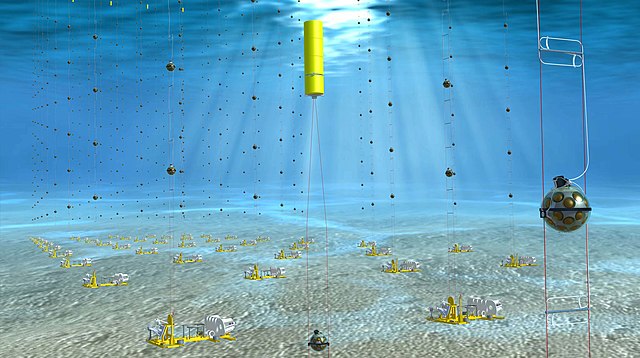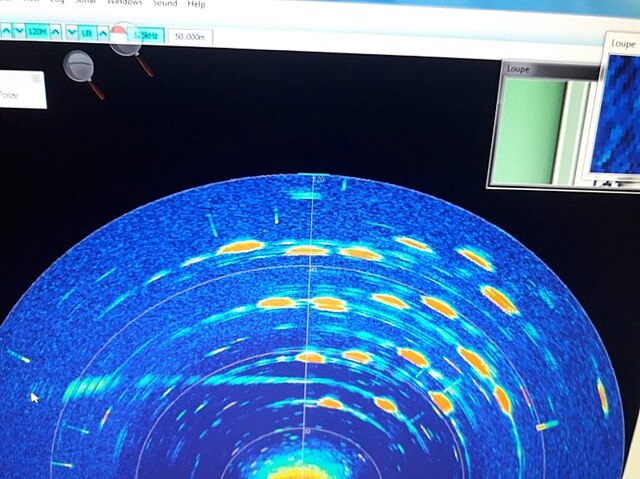The Cubic Kilometre Neutrino Telescope, or KM3NeT, is a European research infrastructure located at the bottom of the Mediterranean Sea. It hosts the next-generation neutrino telescope with water Cherenkov detectors.
Artist's impression of the KM3NeT neutrino telescope anchored to the seabed.
KM3NeT Digital Optical Module (DOM) in the laboratory
Sonar scan of string anchors in ORCA.
ARCA junction box at the seabed.
Neutrino astronomy is the branch of astronomy that gathers information about astronomical objects by observing and studying neutrinos emitted by them with the help of neutrino detectors in special Earth observatories. It is an emerging field in astroparticle physics providing insights into the high-energy and non-thermal processes in the universe.
An optical module from a neutrino telescope. Neutrino telescopes consist of hundreds to thousands of optical modules distributed over a large volume.
The proton-proton fusion chain that occurs within the Sun. This process is responsible for the majority of the Sun's energy.
The interior of the Earth as we know it. Currently, our information comes only from seismic data. Neutrinos would be an independent check on this data







